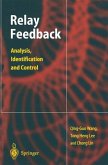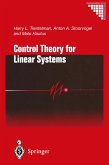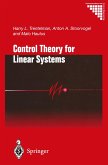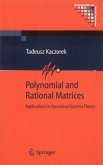An in-depth introduction to subspace methods for system identification in discrete-time linear systems thoroughly augmented with advanced and novel results, this text is structured into three parts.
Part I deals with the mathematical preliminaries: numerical linear algebra; system theory; stochastic processes; and Kalman filtering. Part II explains realization theory as applied to subspace identification. Stochastic realization results based on spectral factorization and Riccati equations, and on canonical correlation analysis for stationary processes are included. Part III demonstrates the closed-loop application of subspace identification methods.
Subspace Methods for System Identification is an excellent reference for researchers and a useful text for tutors and graduate students involved in control and signal processing courses. It can be used for self-study and will be of interest to applied scientists or engineers wishing to use advanced methods in modeling and identification of complex systems.
Part I deals with the mathematical preliminaries: numerical linear algebra; system theory; stochastic processes; and Kalman filtering. Part II explains realization theory as applied to subspace identification. Stochastic realization results based on spectral factorization and Riccati equations, and on canonical correlation analysis for stationary processes are included. Part III demonstrates the closed-loop application of subspace identification methods.
Subspace Methods for System Identification is an excellent reference for researchers and a useful text for tutors and graduate students involved in control and signal processing courses. It can be used for self-study and will be of interest to applied scientists or engineers wishing to use advanced methods in modeling and identification of complex systems.
From the reviews:
"The book is devoted to subspace methods used for system identification. ... The book contains also some tutorial problems with solutions and MATLAB programs, which demonstrate various aspects of the methods propounded to introductory and research material. Therefore it may be a valuable reference for researches as well, a very useful text for tutors and graduate students involved with courses in control and signal processing. The book is clearly written and well organized." (Ryszard Gessing, Zentralblatt MATH, Vol. 1118 (20), 2007)
"Subspace identification methods have become a major tool in system identification during the last decades. ... The book is written in a systematic way and generally easy to follow. The ideas are presented in a systematic and coherent manner. ... the monograph is suited for researchers, practitioners and graduate students, in particular from an (systems) engineering community. It provides an excellent reference book for realization theory and linear systems." (Wolfgang Scherrer, International Journal of Robust and Nonlinear Control, Vol. 18, 2008)
"The book is devoted to subspace methods used for system identification. ... The book contains also some tutorial problems with solutions and MATLAB programs, which demonstrate various aspects of the methods propounded to introductory and research material. Therefore it may be a valuable reference for researches as well, a very useful text for tutors and graduate students involved with courses in control and signal processing. The book is clearly written and well organized." (Ryszard Gessing, Zentralblatt MATH, Vol. 1118 (20), 2007)
"Subspace identification methods have become a major tool in system identification during the last decades. ... The book is written in a systematic way and generally easy to follow. The ideas are presented in a systematic and coherent manner. ... the monograph is suited for researchers, practitioners and graduate students, in particular from an (systems) engineering community. It provides an excellent reference book for realization theory and linear systems." (Wolfgang Scherrer, International Journal of Robust and Nonlinear Control, Vol. 18, 2008)








